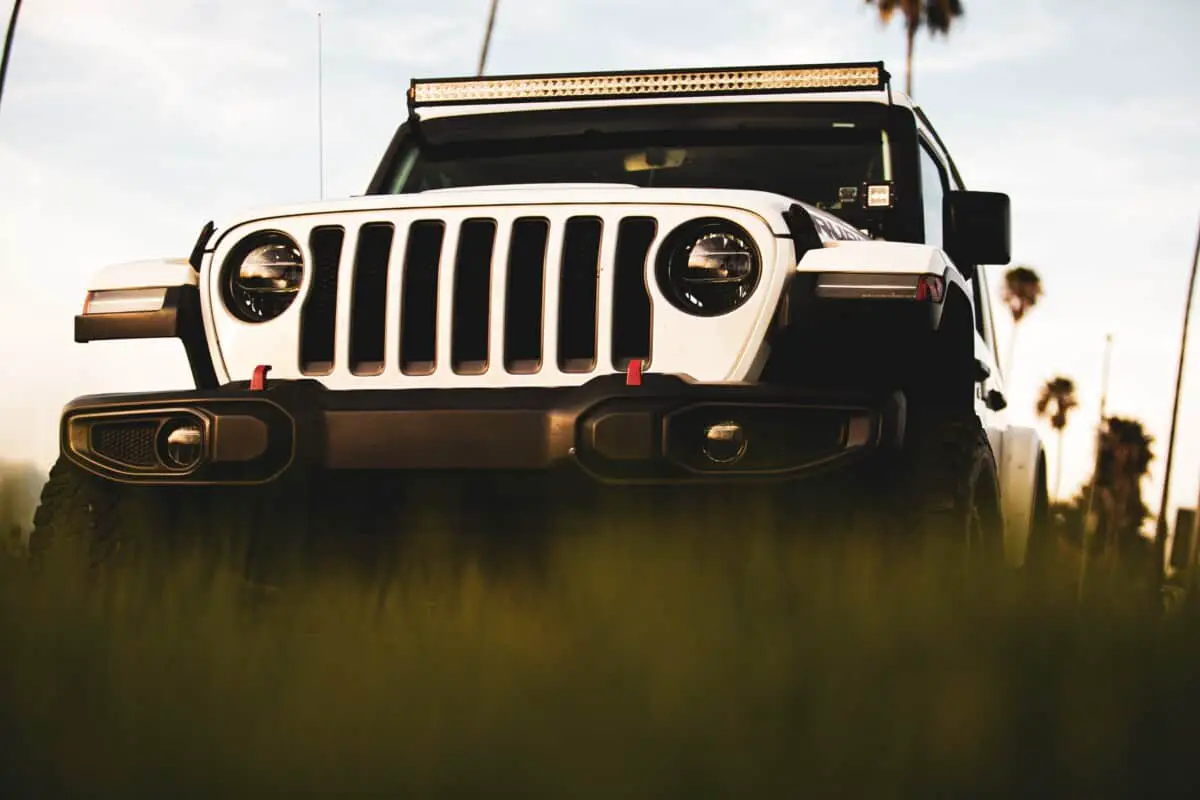Jeep Wranglers are one of the most beloved and iconic vehicles worldwide. They boast incredible off-road and on-road qualities unlike any other. However, buying a new or used Jeep can be risky. Some years were wonderful, while others left users wanting more. So, how should you know which Wrangler is right for you?
The best Jeep Wrangler to date is the 2018 model. It has smooth off-road handling, up to 25 MPG fuel efficiency, and several trims to look through. The customer-voted worst Jeep Wrangler was the 2012 class. Customers complained about loud noises, failing acceleration, and airbag mishaps.
Throughout this article, we’ll cover the following details about the best and worst years to buy a Jeep Wrangler:
- Information about ten top-notch Wranglers and five ‘maybe not the best’ models
- How you can spot a worthwhile year vs. a bad one
- Features to look for when you’re getting a used Jeep of the 15 years on the list
A QUICK DISCLAIMER: Many Jeep owners spend hours upgrading and modifying their Jeeps. It kind of comes with the territory. If that’s you, chances are many of the negative opinions below don’t apply because they are simple fixes and your Jeep is far from stock. Every Jeep finds a special place in my heart because I love the brand and I can be quite biased regardless of any flaws certain years may have. The information below is an effort to pull from unbiased reviews and opinions without putting my own thoughts in the mix.
The Jeep Company’s Unlikely Beginnings
The Jeep company’s origins and transformations are fascinating. The vehicle we recognize today as a Jeep was once the combined work of multiple automotive manufacturers, including the Ford Motor Company, Willys-Overland Motors, and the American Bantam Car Company.
This combined effort was also a war effort. These automobile manufacturers attempted to mass-produce a car series befitting of Allied soldiers going off to fight overseas during World
War II.
The de-roofed, militarized utility vehicle they designed and produced garnered a nickname from such soldiers as the General Purpose (GP) vehicle which created the sound…Jeep.
In the 1950s, one of the creators of the now-iconic vehicle (Willys-Overland, to be precise) trademarked the term, forever setting into motion a chain reaction of events that would lead to the modern Jeep Wrangler.
Good vs. Bad Years
While the Jeep Wrangler has seen at least four distinct iterations, each year’s vehicle is slightly different from the last. As such, it’s impossible to group the models as either “the best ones” or “the worst ones.”
While many Jeep enthusiasts have a preferred model, they may not have a preferred year. But it’s crucial to stay informed about the good and bad years for each type of Jeep Wrangler. Otherwise, you may end up with the body and style you want, but not the performance you deserve.
We’ll start with the qualities that make for a great Wrangler and then see why some years failed to meet the standard. To wrap it up, we’ll give you our top ten and 5 worst Wranglers. Let’s dig in.
Qualities Found in the Best Jeep Wranglers
Most Jeep Wranglers have left their owners feeling happy and satisfied with the overall performance. Today’s Wranglers are rough and rugged, but they boast countless luxurious features ranging from technological upgrades to unparalleled suspension. But how are you supposed to know the right features?
Here are five perks of the best Jeep Wranglers on the market:
- They maintain decent fuel efficiency despite their bulky off-road design. Let’s face it, Wrangler’s are essentially boxes on wheels. The term “Smiles Per Gallon” relates to Jeep for a reason. However, most new models range between 20 to 25 miles per gallon with a few outliers. If you’re looking at a Wrangler and fuel efficiency is a must for you, and it has below 20 miles per gallon, you might want to reconsider. While it’s not a design flaw, it’s a long-term investment.
- Smooth transition from off-road and on-road. The idea of the Wrangler is an adventure. The best Jeep Wrangler models are equipped with the proper suspension and tires to handle both on-road and off-road use. You shouldn’t feel clunky on the road, nor should the suspension lock when you’re off-road.
- A high-quality drivetrain. Don’t skimp on the drivetrain, or you’ll end up paying thousands of dollars to repair it. Even if you get a warranty, why go through the trouble if you don’t have to? As you’ll soon learn, the 2010 Jeep Wrangler introduced much-needed upgrades to solve previous issues.
- Reliability (along with safety features). Jeeps hold their value for a reason, and the case can be made for several models on which were most reliable. However, the 2015 Wrangler was unanimously voted the most reliable year to date, with the 1996 model offering newly improved safety upgrades. From the axles and brakes to everything under the hood, your Wrangler should be built to handle the heat.
- Comfort. Modern Jeeps have established that you don’t have to sacrifice comfort for ability. With a few mods, even my 1999 TJ can ride like a Cadillac. But a comfortable ride from the factory speaks for itself. The 2011 Jeep Wrangler had excellent handling and smooth riding, while the 1987 model felt rocky and lacked adequate suspension. Check Consumer Reports for customer feedback on most Jeep Wrangler years and models.
As you can see, there’s a lot to look out for when you’re getting a new Wrangler. Some of them hold their value, while others were quite upsetting. Check out our article Are Jeep Wranglers Good Daily Drivers to see how the above qualities tie into Jeeps rating as a daily driver. Fortunately, you’re about to discover all of the details about each year, so you know what to get (and what to avoid). Before we dive into the main list, let’s explore some of the qualities that separated the bad years from the pack in the next section.
Why Are Some Years Bad?
Much like all vehicle manufacturers, Jeep strives to create better models every year. However, they also try to break the limits and test new upgrades annually. This risky, trend-setting, innovative behavior is what makes some years excellent and others not-so-good. Here’s why some Wranglers aren’t up to par:
- Too many attempted upgrades made the 2012 model (and a few others) a bit rocky. It’s difficult to combine so many high-end features, which led to drivetrain issues, loud driving, and many other problems. It’s a result of striving for excellence; mistakes are bound to happen.
- When Jeep tried to combine off-road and on-road capabilities, there were a few mishaps. Some years were rocky and bumpy when they were on asphalt, while others couldn’t handle off-road driving very well. Fortunately, those years are far in the past. These days, Jeep has nearly perfected the art.
- The Wrangler has a unique appearance, but Jeep made a few adjustments that ruined it for a couple of years. Customers complained about boxed lights, traditional SUV-like cosmetics, and more. Since one of Jeep’s biggest trends is its appearance, this feature is crucial for many drivers.
- Much like the previously mentioned off-road and on-road crossovers, Jeep made a few ultra-loud vehicles. Jeeps have never been known for their “quiet ride”, but 2008 Wranglers faced an unsettling noisy ride that led to it being one of the most complained about years of all.
It’s safe to say that most Jeep Wranglers are excellent. They’re off-road and on-road beasts that can roll through situations most vehicles couldn’t. However, it’s impossible to ignore the problems associated with a few years. Without further ado, let’s review the ten best and five worst years for Jeep Wranglers.
The Best Years
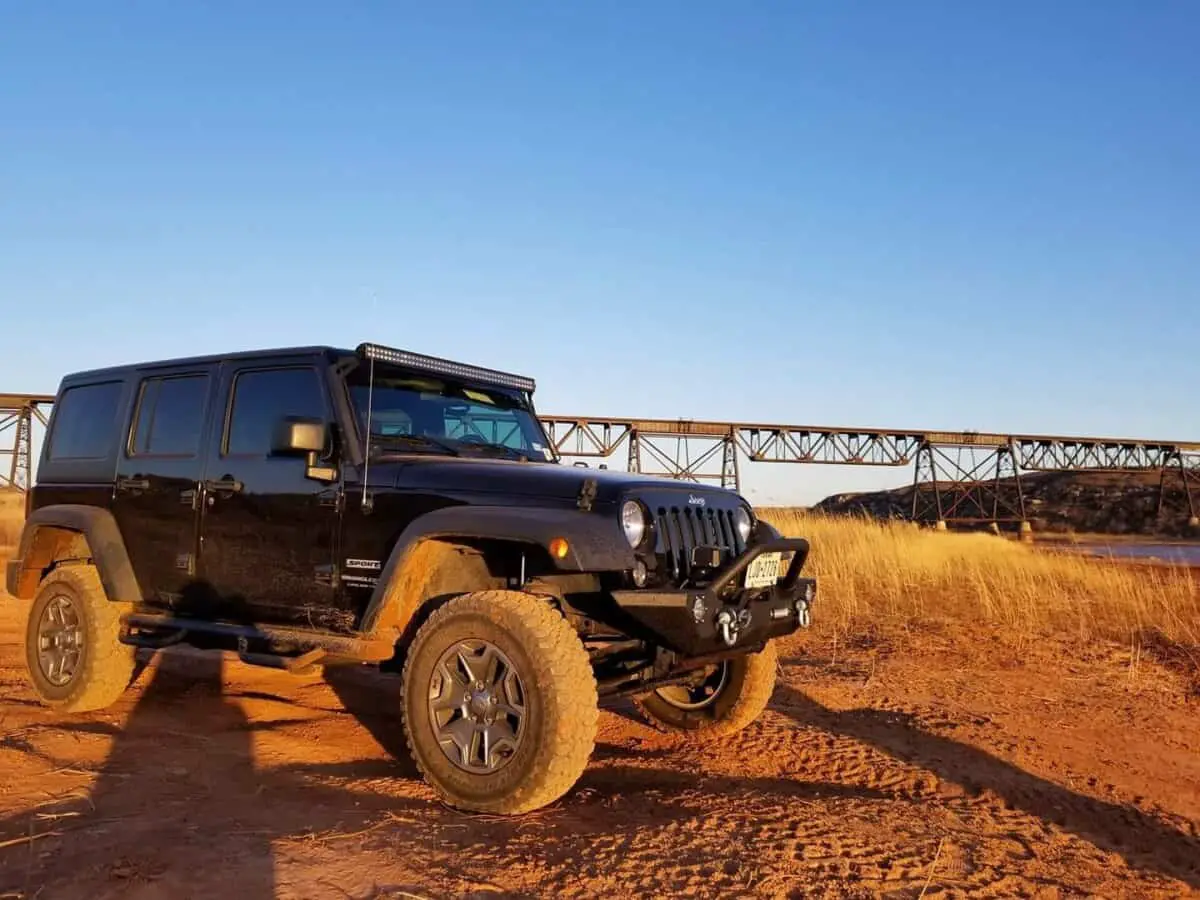
- Best Overall: 2018 Jeep Wrangler
- Best for Classic Design: 1980 Jeep Wrangler
- Best Upgraded Acceleration: 1990 Jeep Wrangler
- Best Optimized Safety Features: 1996 Jeep Wrangler
- Best for Smooth Driving Upgrades: 2011 Jeep Wrangler
- Best Newly Reliable Drivetrain: 2010 Jeep Wrangler
- Best Stability Upgrades: 2011 Jeep Wrangler
- Best Tech Upgrades: 2019 Jeep Wrangler
- Best Trend-Setter: 2003 Jeep Wrangler
- Best for Reliability: 2015 Jeep Wrangler
Best Overall: 2018 Jeep Wrangler
The 2018 Jeep Wrangler set the bar for a new era of the family. It’s reliable, there are countless tech upgrades, and it has unbelievable handling. As explained by Driving.ca, Jeep did an amazing job of maintaining the classic box-like appearance while upgrading everything to a modern feel.
If you get a 2018 Wrangler, you can cruise over steep hills, through mud pits, and on any road without feeling pull-back. It’s smooth, reliable, and it has great fuel efficiency (23 city and 25 highway MPG). What more could you ask for from these old school vehicles? In a time when countless brands are leaving cherished designs in the past, Jeep holds true.
The 2018 Jeep Wrangler might be younger than most of the lineup, but there’s no denying the quality and power that will be useful and prized for many years to come. If you want a Wrangler that holds all of the company’s sought after features, look no further.
Pros
- It was very comfortable compared to many previous years.
- It’s easy to drive the 2018 Jeep Wrangler.
- Fuel efficiency was decent based on similar SUVs of the year.
- Handling and control were highlighted during this year.
Best for the Classic Design: 1980 Jeep Wrangler
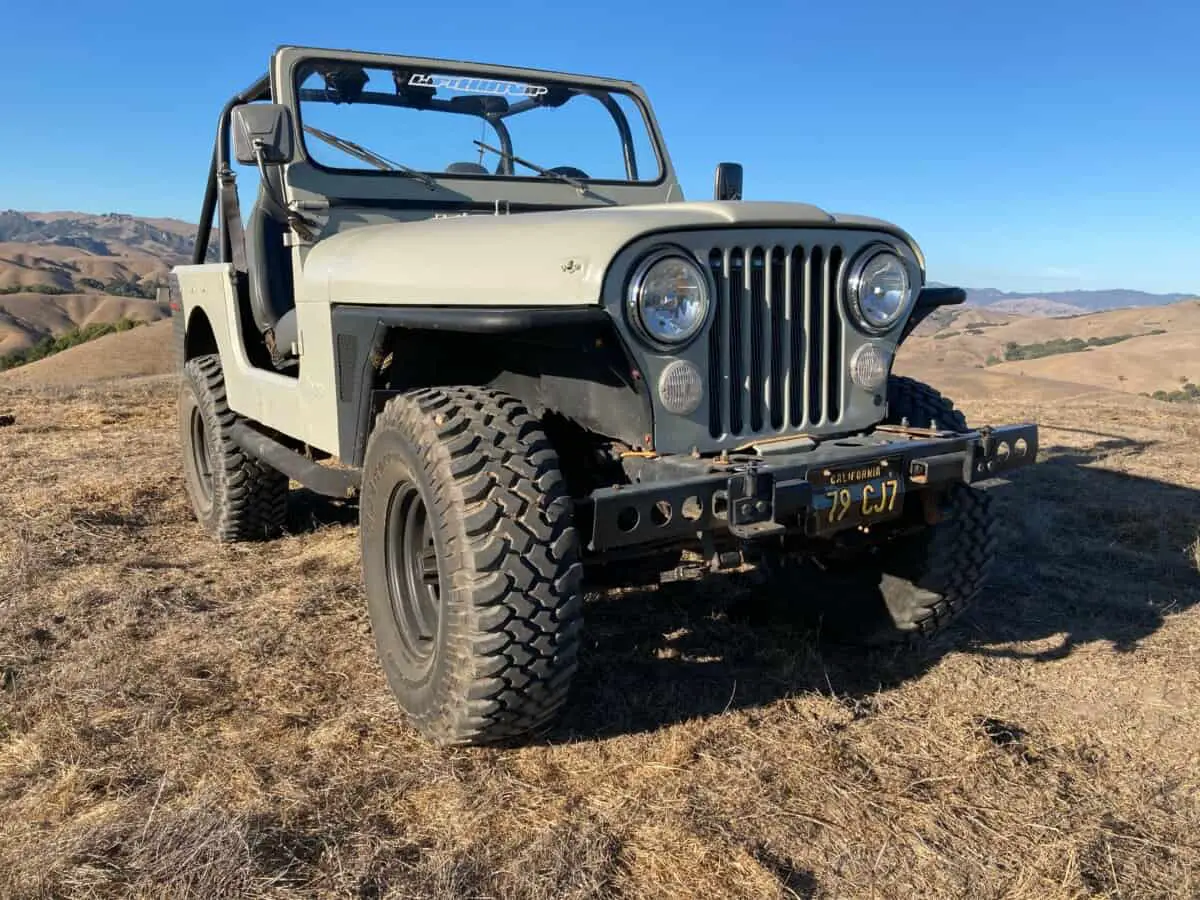
Speaking of high-quality appearances, the 1980 Jeep Wrangler was near the top. The removable top made it a perfect summertime vehicle, but you could slide the durable cover over the cab and cruise in any weather. Combining durability and openness, the 1980 Wrangler was and still is a great pick.
The main features that people love about Wranglers are their military-style appearance, boxy protection, and outdoor cosmetics. The 1980 model embodies all of those perks without ruining the vehicle’s integrity or longevity. It’s old enough to preserve the appearance but young enough to run for several decades.
1980 was considered a classic year for the Jeep Wrangler. The body was compact, but the engine was powerful. Breaking standards isn’t uncommon for the company, but nobody expected such a useful, practical, exciting vehicle. That’s what brought the 1980 model to the front: It’s not just an SUV; It’s an adventurous experience. Plenty of owners have kept their ’80 Wrangler, which is why it’s challenging to find them for sale these days.
Pros
- This model set the classic Jeep Wrangler appearance for several decades.
- It lasts much longer than most older vehicles.
- They’re rare, making them an asset to those who own them.
- The two-seated interior was comfortable and easy to move around in.
Best Upgrade Acceleration: 1990 Jeep Wrangler
The 1990 Jeep Wrangler kept many fans onboard. It didn’t have all the fancy bells and whistles of modernized SUVs, but it retained the classic Jeep feeling. This two-seater had enough room for hiking gear, a cooler, and anything else you needed for an outdoor adventure. However, the main reason it impressed so many owners was the upgraded acceleration.
Wranglers are known for their off-road compatibility, not speed and acceleration. That all changed when the 1990 Jeep Wrangler improved the engine. It was a 4cyl, but it kept up with most on-road vehicles.
City drivers often ignored Wranglers because they were slow and sluggish when it came to acceleration, but the ’90 model made it an excellent fit for everyone.
Many people believe that 1990 was the last year of the military-style cab. Although Jeep Wranglers still have a boxed shape, it’s not the same rugged two-seater that many drivers knew and loved. While appearance is always based on personal preference, Jeep ran with it with the 1990 model.
Pros
- This model took acceleration to the next level.
- People could use their Wranglers as commuters.
- Off-road and on-road capabilities leveled out.
- The engine was compact and easy to work on.
Best Optimized Safety Features: 1996 Jeep Wrangler
Since people drove Wranglers off-road, it was sort of surprising that safety features weren’t introduced many years ago. Beginner off-road drivers complained about rolling over or braking issues on asphalt. Thankfully, Jeep heard their calls. In 1996, they produced a Wrangler centered around safety and reliability.
The braking system was phenomenal. Jeep kept similar components for modern Wranglers since they worked so well. Why fix what isn’t broken? Rather than adjusting too many parts, the company kept a similar appearance to the previous year (though that changed in 1997 when the Wrangler switched to an all-new class lineup).
Jeeps were known to be a bit unsafe until the 1996 Wrangler. You could cruise alongside other cars on the highway. You didn’t have to look for a commuter to make it to work anymore, which was a massive advantage for many owners. This change led to Jeep becoming one of the industry’s front runners, but it wasn’t until 2006 that comfort took charge.
Pros
- Drivers didn’t have to worry about sluggish speeds or bad braking.
- Durable materials constructed an all-around safer model.
- They were fast enough to stay with traffic.
- Rolling over wasn’t as much of an issue as it used to be.
Best for Smooth Driving Upgrades: 2011 Jeep Wrangler
For many years, Jeep Wrangler owners knew they weren’t looking for a relaxed ride. These vehicles were bumpy and rough on most surfaces, on-road and off-road. It didn’t matter where you were; you weren’t going to find a smooth Jeep.
In 2011, the Wrangler started its journey to combat the negative stigma.
While the rough ride was a cherishable classic feature, it kept many potential owners at bay. When the 2011 Wrangler took the scene, everything changed. According to Auto Trader, there are over 600 Wrangler models to choose from since 2011, most of which include comfortable, cushioned seats.
Alongside relaxed seating is the impressive suspension. You don’t have to feel like you’re rocking back and forth every time you stop the vehicle or feel like you are chattering your teeth over bumpy roads. The 2011 Wrangler was the start, but every Wrangler since has used similar comfort upgrades (including the 2020 model).
Pros
- Jeep Wranglers were no longer synonymous with rocky rides.
- Hundreds of customizations opened after this year.
- The suspension had major upgrades (much-needed, too)
Best Newly Reliable Drivetrain: 2010 Jeep Wrangler
The previous year, Jeep’s Wrangler lineup received a welcome drivetrain overhaul. People were able to choose from multiple models and sizes, making Wranglers much more customizable, safe, and reliable than ever before. You could choose between the four-speed automatic and the 6-speed manual transmission.
The 3.8L V6 boasted more than enough power to handle off-road scenarios, cruising uphill at a staggering rate. Jeep Wranglers weren’t the fastest vehicles on the road for a very long time, but they caught up in recent years. The big V6 engine was more than enough to keep up with highway traffic and accelerate when necessary.
Along with the impressive transmission, the entire drivetrain was reliable. It lasts over 100,000 miles without breaking down (in most cases), which is much more than the average Wrangler from previous years. 2015 might be the most reliable year all-around, but there’s no ignoring the 2010 drivetrain reliability and peace of mind.
Pros
- Powerful transmissions made Jeep Wranglers a go-to choice.
- They were improved for on-road and off-road performance.
- Reliability became a major focal point for the company.
- Once again, suspension systems got an upgrade.
Best Tech Upgrades: 2019 Jeep Wrangler
Technological upgrades have taken the auto industry by storm. Consumers want the biggest touchscreens, Bluetooth connectivity, blindside adjustments, and so on. Rather than sticking with their old school ways, Jeep upgraded the 2019 model to be one of the most advanced vehicles on the road without ruining the appearance.
New owners can enjoy a touchscreen right in the center of the console. It’s small enough to stay out of the way but big enough to handle and use whenever you need to. You can connect your favorite devices via Bluetooth and enjoy power seated. Some models have heated seats, too.
Motortrend explains that all 2019 models except the base one include a nine-speaker Alpine system. Alpine speakers combine the bass with clarity to produce high-quality sound that typically costs hundreds to thousands of dollars. Who knew Jeep could include so many tech features while keeping the boxed aesthetic?
Pros
- Three touchscreen sizes were released.
- Power seats were used alongside heated cushions for some models.
- Bluetooth connectivity allowed for user-friendly interactions.
- High-end sound quality made Jeep a luxury brand.
Best Trend-Setter: 2003 Jeep Wrangler
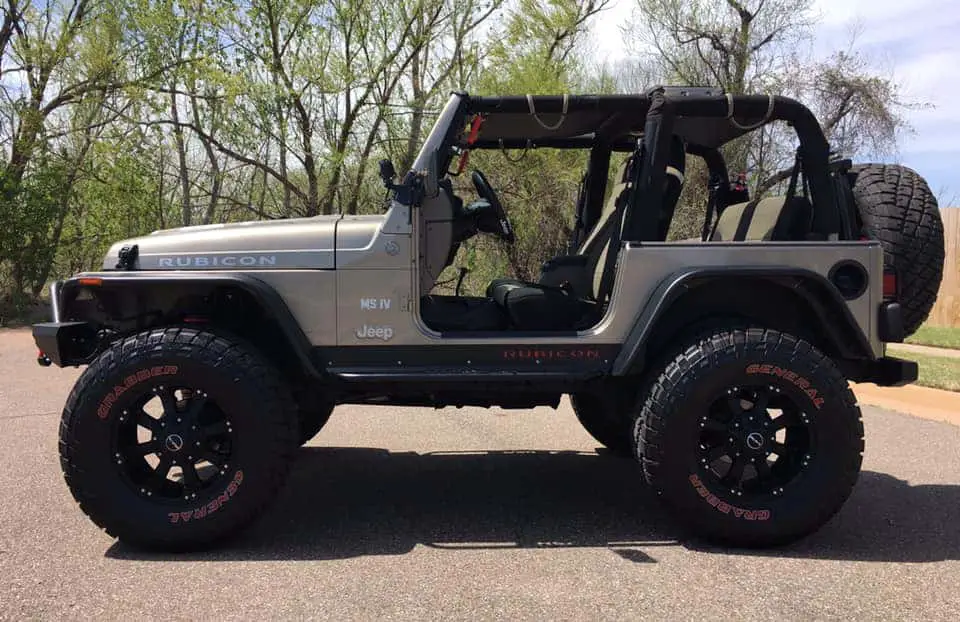
Many will argue that the last “true” Jeep was the Wrangler TJ (1997-2006) series. Jeep came back to it’s roots with this Jeep by bringing back the circle headlights and prominent features that had the classic Jeep feel. With the TJ, the suspension was changed to a four coil spring suspension vs leaf springs found in previous years. This design is still used to this day.
The Jeep TJ had the iconic Straight 6 4.0 Liter engine that is all but indestructible. These engines have been reported multiple times to exceed 400,000 miles and keep ticking. And while the Jeep TJ in and of itself set trends that are being carried out in modern Jeeps, one year stands apart for changing the Wrangler forever…and that is 2003.
In 2003, Jeep would introduce the Rubicon model to it’s Wrangler line ups. This model changed the factory standard for off-road capable right off the lot. The Rubicon came with 31″ tires (big deal at that time), front and rear locking differentials, 4:1 low range gear ratio for off-road crawling, beefier Dana 44 axles, and disc brakes all around.
To this day, the Rubicon lineup features components that allow the Wrangler to handle serious off-roading right out of the gate and that’s all thanks to 2003.
Pros
- This was the year that shaped Jeep.
- It has a nostalgic feeling that won’t ever go away.
- The two-seater style was fun to drive for everyone.
- It combined classic Wrangler looks with modern technology for a style that will go down in history
Best for Reliability: 2015 Jeep Wrangler
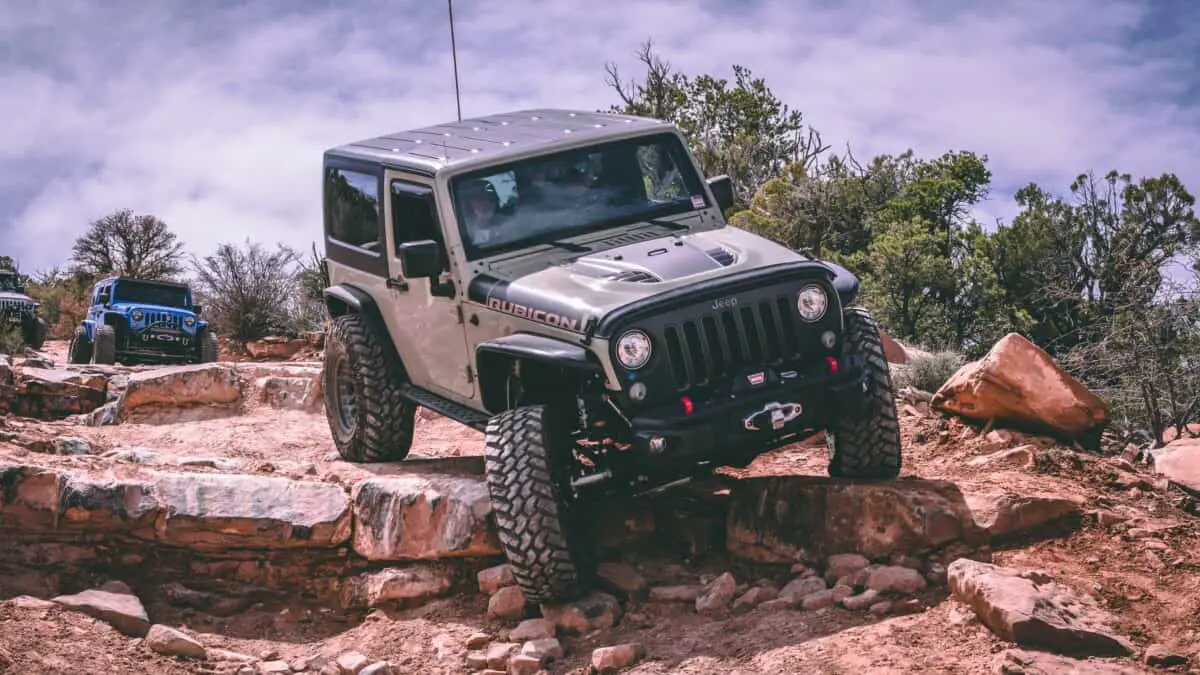
The aforementioned Ballistic Parts article shows that the 2015 Jeep Wrangler was rated the most reliable year for the model. It’s smooth, comfortable, and the drivetrain stands the test of time. The reason so many car dealerships offer drivetrain warranties is they’re the first major part to blow, but the 2015 Wrangler extended the expected limits.
If you want a Jeep Wrangler that keeps the stylish appearance but adds a touch of modern reliability and performance, check out 2015’s lineup. You can choose between a soft-top or hardtop. Remove the cover to reveal the classic Wrangler cage as you roll down the highway or off-road.
Although it didn’t have new-age touchscreens, the 2015 Wrangler had digital radios and air conditioner controls. You could stay cool or warm around the clock, which was a major issue for many Wranglers in the ’80s and ’90s (and a few early-2000’s models). They also have adjustable seats and a few drivetrain options.
Pros
- From the drivetrain to the suspension, this year was very reliable.
- Modernized features made it a better choice for many drivers.
- People could choose between hardtops and soft tops.
- Optimized heating and air conditioning solved previous customer complaints.
The Worst Years
- Worst Overall: 2012 Jeep Wrangler
- Worst Off-Road Experience: 2007 Jeep Wrangler
- Worst Stability: 1987 Jeep Wrangler
- Worst Appearance: 1988 Jeep Wrangler
- Worst for Loud Driving: 2008 Jeep Wrangler
- Worst Comfort: 2006 Jeep Wrangler
Worst Overall: 2012 Jeep Wrangler
Almost every source claims the 2012 Jeep Wrangler was one of the “not so great” years. It lacks comfort, control, and stability. Some owners complained about roll-overs, whereas others believed the complaints were unnecessary. Since so many people had a decent experience, it’s understandable that both would come from both sides of the argument.
Engine overheating was another major problem. It had plenty of power, but the radiator wasn’t holding up. With semi-slow speeds, bad acceleration, and overheating issues, it’s no surprise that Consumer Reports had countless complaints.
It’s difficult to claim that one year was worse than all of them, but 2012 wasn’t a good year for the Jeep Wrangler. Even the suspension showed issues, which is a focal point for the off-road community. The one redeeming quality, as with every Jeep…was that it looked great.
Worst Off-Road Experience: 2007 Jeep Wrangler
Since off-roading and drugged driving are part of Jeep’s main selling points, the 2007 Wrangler was quite an upset. Some drivers claim it was an excellent addition to the lineup for on-road driving (it was smooth and had decent handling), but off-road driving was horrendous. If you’re looking for an off-road Wrangler and don’t plan to do your own modifications, steer clear of this one.
The main reason this one isn’t the worst overall is that it’s a decent on-road vehicle. It’s a bit loud, but that’s expected in most Wrangler models before 2010. Those who prefer on-road driving with the appearance and style of a Jeep might enjoy this one. It has comfortable seats, wide windows, and a couple of soft tops to choose from.
Worst Stability: 1987 Jeep Wrangler
Jeep Wranglers used to be notorious for rolling over due to a high center of gravity. The 1987 model saw some of the worst stability ratings around. It was rocky on and off-road, making it uncomfortable for anyone. However, it looked like the classic 1986 Wrangler, which was more than worth the trade-off for some drivers.
Due to the classic appearance, 1987 Jeep Wranglers are often found above $10,000. They hold their value for the old school feeling rather than usability, comfort, and performance. For an around-town vehicle, you’ll get quite a few compliments.
The ’87 Wrangler is hard to knock since it’s such a throwback vehicle. Alongside the ’86, it was a trend-setter. The performance value is what ruins it since it’s much worse than other SUVs of the time.
Worst Physical Appearance: 1988 Jeep Wrangler
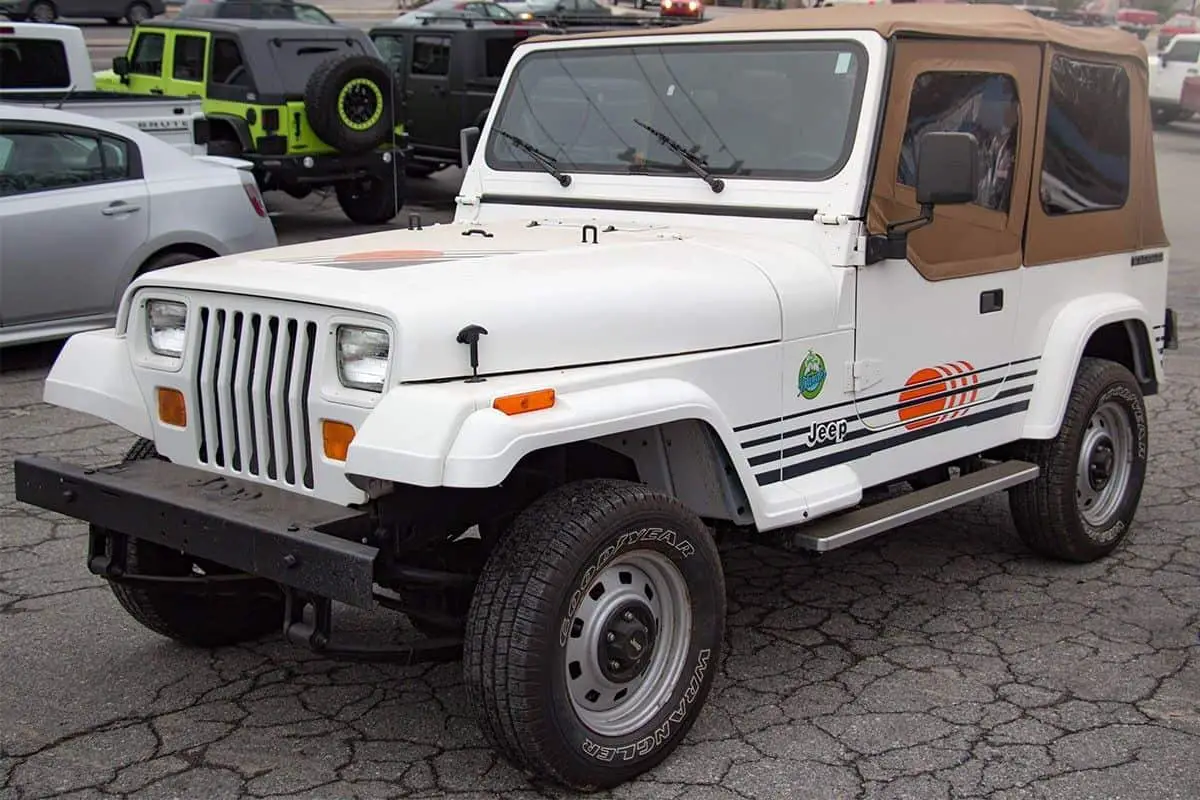
In 1988, Jeep tried to change a few features of the Wrangler to make it look newer. However, it resulted in an elongated hood and a boxed cab that made it look more like a shoe than a car. Unfortunately, it didn’t look enough like the class ’86 Wrangler design to make it worth the money. On top of that, the cover often leaked.
Much like other Wranglers at the time, the ’88 Wrangler had a rocky ride and a questionable level of stability. Thankfully, Jeep drastically improved the Wrangler appearance without forgetting the classic boxed look.
Many customers claimed the ’88 Wrangler looked like a toy rather than a car.
After reviewing it for only a few seconds, it’s understandable that they’re not satisfied. The positive side is that Wranglers are easy to work on if you’re mechanically inclined.
Worst for Loud Driving: 2008 Jeep Wrangler
Although Jeep Wranglers aren’t known for whisper-quiet driving, the 2008 Wrangler was a bit too loud. Road noise was awful, and it was even worse when cruising on the highway. From the bumpy suspension to the insulation-free underside, the ’08 was as loud as can be. If noise isn’t an issue for you, the off-road issues might be.
Along with the loud road noise came bumpy handling. The 2008 Wrangler was defined as clunky and uncomfortable. It suffered countless mechanical problems that rendered it one of the worst years for this famed model. Again, Jeep recognized the issues and fixed them in recent years.
Conclusion
Now that you know all of the best and worst years to buy a Jeep Wrangler, it’s time to decide which one you want. Do you prefer the iconic trend-setting 2003 Rubicon or the tech-friendly 2019 Wrangler JL? Regardless of the complaints, almost all Jeep Wranglers are worth driving at least once.
Here’s a quick recap of what the post should’ve taught you:
- Each and every Jeep is different and has it’s pros and cons
- Suspension, off-road capabilities, and unique appearances are Jeep’s most well-known features.
- 2012 was not a great year for many Jeep owners
- 2018 and 2019 rank among the best Wranglers on the market
It doesn’t matter what year Wrangler you have, adventure is 100% still possible and each Wrangler is special to the Jeep family. Wherever your Jeep takes you, whether it’s the concrete jungle or the one with all the trees, just remember to keep The Wilderness on YOUR Side.

